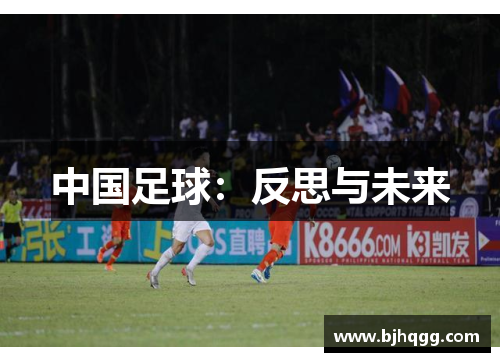中国足球:反思与未来
Certainly! Here's a structured article on the topic "Reflections and Future of Chinese Football":
**Abstract:**
In examining the trajectory of Chinese football, this article delves into its past shortcomings, current challenges, and the promising future it seeks to carve out. By analyzing key aspects such as grassroots development, international competitiveness, strategic reforms, and cultural impact, we aim to provide a comprehensive view of where Chinese football stands today and its potential path forward.
---
1、Grassroots Development
Grassroots football forms the foundation of any successful national program. In China, despite recent efforts, grassroots development has historically faced challenges stemming from infrastructure deficiencies and a lack of systematic youth training programs. The early emphasis on results rather than skill development hindered long-term player growth. However, recent investments in youth academies and partnerships with European clubs signify a shift towards nurturing young talent. Initiatives like the Chinese Football Association's grassroots programs aim to cultivate a new generation of skilled players capable of competing on a global stage.
Moreover, collaborations with foreign leagues and coaches bring valuable expertise, aiding in the establishment of standardized training methodologies and coaching practices. These efforts are pivotal in ensuring sustained growth from the grassroots level upwards, laying a solid groundwork for future competitiveness.
Continued investment and a shift in cultural perceptions towards valuing technical skill over immediate results are critical for fostering a robust pipeline of talent, essential for the long-term success of Chinese football.
2、International Competitiveness
International competitiveness remains a crucial benchmark for assessing Chinese football's progress. Despite significant investments in foreign players and coaches, the national team's performance has been inconsistent on the global stage. Challenges such as adapting to international playing styles, building team cohesion, and overcoming tactical deficiencies persist.
The influx of international talent in the Chinese Super League has provided valuable experience but has not always translated into enhanced domestic player development. Strategic reforms focusing on limiting foreign player quotas and prioritizing youth development could rebalance the league's competitive dynamics while fostering a more sustainable pathway for local talent.
VSport-胜利因您更精彩To enhance international competitiveness, strategic planning must align club investments with national team objectives, emphasizing long-term development over short-term gains. Addressing structural issues and promoting a more integrated approach between club and national team football will be pivotal in achieving sustained success at the international level.

3、Strategic Reforms
Strategic reforms are pivotal in reshaping the trajectory of Chinese football. Historically, administrative inefficiencies, corruption scandals, and a lack of transparency have impeded progress. Recent reforms by the Chinese Football Association aim to address these issues through regulatory oversight, financial transparency, and governance restructuring.
Implementing a more meritocratic system for talent identification and club licensing can enhance league competitiveness and financial sustainability. Regulatory frameworks that promote fair play, fiscal responsibility, and youth development are essential for long-term growth.
Furthermore, initiatives to strengthen grassroots infrastructure, improve coaching standards, and enhance scouting networks are crucial components of comprehensive reform efforts. By fostering a more competitive and transparent football ecosystem, China can attract broader investments and talent while laying the groundwork for sustainable success.
4、Cultural Impact
The cultural impact of football extends beyond the pitch, influencing societal values, identity, and national pride. In China, football's popularity has surged, driven by media coverage, corporate sponsorship, and international tournaments. Despite this, cultural barriers such as traditional emphasis on academic achievement and regional disparities in sports infrastructure pose challenges.
Promoting football as a vehicle for social cohesion and national unity requires targeted initiatives that resonate with diverse demographics. Leveraging football's appeal to engage youth, promote healthy lifestyles, and foster community spirit can cultivate a broader fan base and grassroots support.
Moreover, integrating football into educational curricula and community programs can instill values of teamwork, discipline, and resilience from an early age, nurturing a football culture that transcends generations.
总结:
Reflecting on the past and envisioning the future of Chinese football reveals a complex landscape of challenges and opportunities. By prioritizing grassroots development, enhancing international competitiveness, implementing strategic reforms, and leveraging football's cultural impact, China can chart a course towards sustainable success. Continued investment in youth programs, regulatory reforms, and cultural integration will be crucial in realizing the full potential of Chinese football on the global stage.
The journey ahead requires concerted efforts from stakeholders across government, sports organizations, and society to build a vibrant football ecosystem that inspires future generations and redefines China's place in the world of football.

发表评论